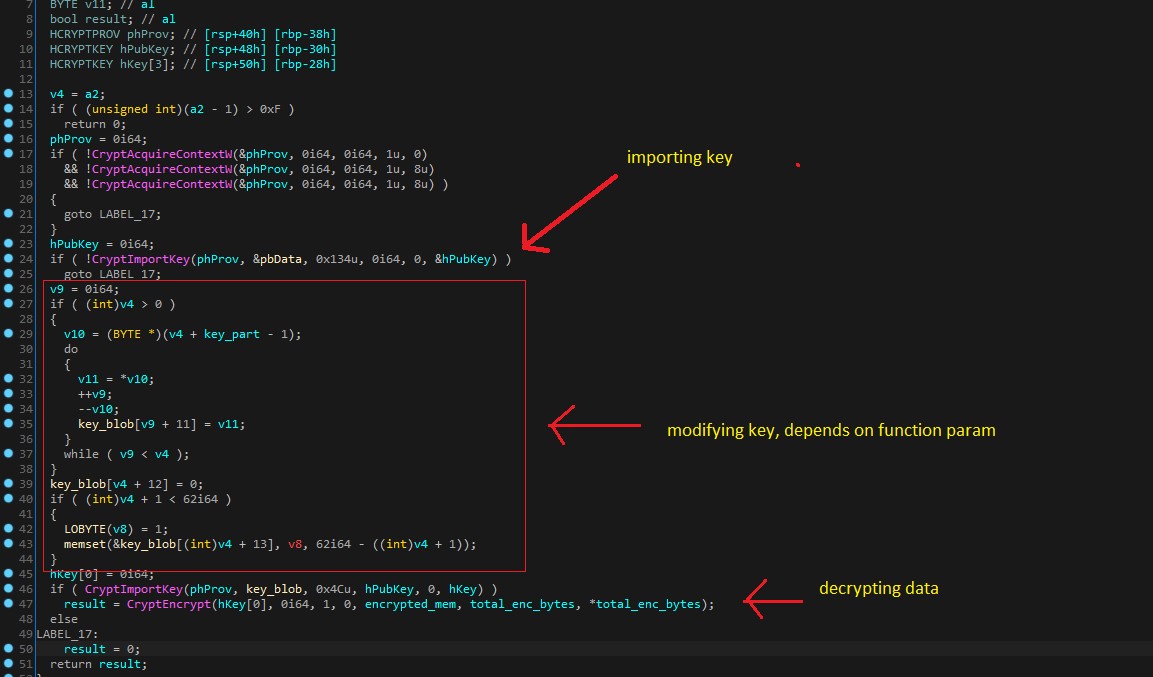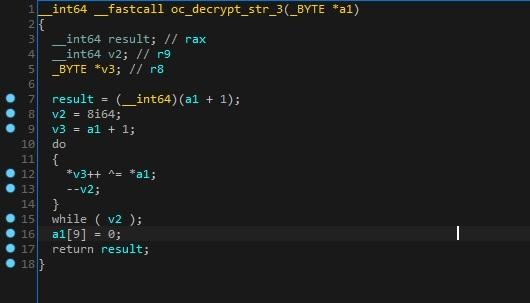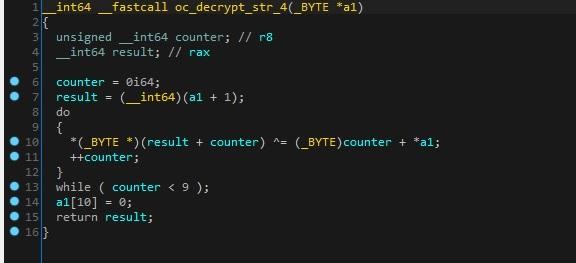Ofer Caspi, a fellow Alien Labs researcher, co-authored this blog.
Executive Summary
AT&T Alien Labs actively tracks the TrickBot group through an automated malware analysis system, hunting, and in-depth technical research. On April 20th, 2020 independent security researchers “pancak3lullz” (@pancak3lullz) and Vitali Kremez (@VK_Intel) posted a Tweet regarding two new TrickBot modules aptly named “BazarLoader” and “BazarBackdoor” after attempted Command and Control (C2) communications with the Emercoin DNS (EmerDNS) .bazar domains. EmerDNS is desirable for attackers because it is a distributed blockchain that is decentralized, cannot be censored, and cannot be altered, revoked or suspended by any authority. Alien Labs’ automated malware analysis engine had picked up these samples a few days earlier (Ex: 7c93d9175a38c23d44d76d9a883f7f3da1e244c2ab6c3ac9f29a9c9e20d20a5f)
BleepingComputer posted a blog with input from Vitali Kremez regarding a phishing campaign distributed through the Sendgrid email marketing platform delivering COVID-19 lures that ultimately led to the TrickBot BazarBackdoor. The purpose of this blog is to provide additional technical details and an in-depth study of the signed TrickBot BazarLoader.
Background
Since TrickBot was discovered in 2016 it has been involved in information stealing, credential theft, ransomware, bitcoin mining, and loading other common crimeware malware as a first or second stage loader. For initial access as a first stage loader it typically accomplishes its objective through spear phishing links (T1192) or spear phishing attachments (T1193) using macro enabled Microsoft Office files. As a second stage payload and Dynamic Link Library (DLL) it is frequently loaded by Emotet. To a lesser extent TrickBot has been loaded by Ostap JavaScript Downloader and Buer Loader. In higher priority, higher profile TrickBot Anchor campaigns that target enterprises, PowerTrick and more_eggs/TerraLoader have been used to load other frameworks.
TrickBot has recently added a Remote Desktop Protocol (RDP) brute force scanner module, an Active Directory (AD) harvesting module, and the mexec executor module. There are some indications that TrickBot may be moving away from their mshare, mworm, and tabDll modules for retrieving payloads from URLs in favor of the “nworm” module performing this task. It is important to note that TrickBot group prefers to use shellcode “file-less” modules making detection more difficult.
Alien Labs has previously identified digitally signed TrickBot Loaders, one of which was signed by an entity named “VB CORPORATE PTY. LTD.” Pivoting in VirusTotal on the signer shows the first submission was on 2020-01-02 20:24:57. Historically, the TrickBot group has continued to reuse their revoked certificates to sign TrickBot Loaders as long as six months after the initial date of detection on VirusTotal. A list of known TrickBot signers is included below. The associated signature serial numbers are included in the YARA rule in the Appendix.
- BlueMarble GmbH
- Cebola Limited
- Company Megacom SP Z O O
- D Bacte Ltd
- FLORAL
- James LTH d.o.o.
- LIT-DAN UKIS UAB
- PAMMA DE d.o.o.
- PEKARNA TINA d.o.o.
- PLAN CORP PTY LTD
- SLIM DOG GROUP SP Z O O
- THE FLOWER FACTORY S.R.L.
- VAS CO PTY LTD
- VB CORPORATE PTY. LTD.
- VITA-DE d.o.o.
Analysis
The TrickBot BazarLoader authors have produced an advanced module, with a significant amount of obfuscation. The BazarLoader/Cryptor uses multiple routines to hide API calls and embedded strings, which are then decrypted and resolved at runtime. Once executed, the loader will allocate memory to store and decrypt its shellcode, which will be allocated to a NUMA node for faster execution. After allocation and decryption, the next instructions will jump to the shellcode that will be executed on the heap.
Next, the malware will try to communicate with .bazar domain C2 servers. Once the C2 has been established, the loader will try to inject its payload into a system process using the process hollowing technique (T1093), which will create a suspended thread, unmap the destination image from memory, allocate new memory in the target process, copy the shellcode into the target process, set the thread context, and resume the process. In the sample analyzed, 1e123a6c5d65084ca6ea78a26ec4bebcfc4800642fec480d1ceeafb1cacaaa83, the loader will first attempt to inject into an “svchost” process, and if injection fails, it will try to inject into the “explorer.exe” process, and if injection fails again as a last-ditch effort the loader will attempt to inject into the “cmd.exe” process. For persistence the loader will create a registry key under “HKEY_LOCAL_MACHINE\Software\Microsoft\Windows NT\CurrentVersion\Winlogon\Userinit”.
The malware uses the Windows API “VirtualAllocExNuma” function to allocate memory for its shellcode to be executed. The “VirtualAllocExNuma” function is used to allocate memory on a NUMA node, which allows for faster execution. The implementation can be seen In Figure 1 below. It is interesting to note that the “VirtualAllocExNuma” function is not commonly used in process injection.
Figure 1. API Resolution and Shellcode Decryption Routines
In Figure 1 above the BazarLoader allocates memory using the uncommon “VirtualAllocExNuma” routine, and then it uses two iterations of the decryption routine to decrypt its shellcode. In the second call to the decrypt function some of the encryption key bytes are changed based on function parameters. In Figure 2 below a representation of the decompiled decrypt routine can be seen importing the encryption key, modifying the encryption key bytes dependent on the parameters passed, and then decrypting the data.
Figure 2. Decryption Routine
The BazarLoader authors have created dozens of decryption routines, and with almost each string including APIs, DLLs, and C2s there is a once per use unique decryption routine. An example of multiple decryption routines can be seen in Figures 3, 4, 5 and 6 below.
Figure 3. Decryption Routine
Figure 4. Decryption Routine
Figure 5. Decryption Routine
The loader uses the same decryption technique described above to resolve the API calls it uses during execution. The Windows API resolution can be seen in Figure 6 below.
Figure 6. Windows API Resolution
For injection, the malware resolves APIs from the ntdll.dll after it loads from disk and checks that there are no inline hooks within its function, that could be created for example by AV software that tracks those API calls.
The targeted processes for injection can be seen in Figure 7 below.
Figure 7. Targeted svchost, explorer, and cmd Windows Processes
The BazarLoader injection code can be seen in Figure 8 below.
Figure 8. BazarLoader Injection Procedure
The load order of APIs called in the injection procedure is:
- CreateProcessA (CREATE_SUSPENDED | CREATE_NEW_CONSOLE)
- NtGetContextThread
- NtReadVirtualMemory
- NtUnmapViewOfSection
- VirtualAllocExA
- NtWriteVirtualMemory
- NtSetContextThread
- NtResumeThread
The obfuscated C2 servers are decrypted in the function shown in Figure 9 below.
Figure 9. C2 Domains forgame[.]bazar and bestgame[.]bazar
Conclusion
The TrickBot group continues to be a formidable threat in the cybercrime landscape as well as the advanced adversary threat landscape with TrickBot Anchor. The operations tempo for TrickBot group is high with active development leading to module releases, sunsetting older TrickBot modules, digitally signing malware with new certificates as well as older revoked certificates, and large active campaigns based on socially relevant topics such as the COVID-19 pandemic.
Appendix
The following YARA rules are used by Alien Labs. For additional detections and a complete listing of Indicators of Compromise (IOCs) please see the OTX pulse.
YARA Rules
import "pe"
rule crime_trickbot_bazar_loader {
meta:
author = "AT&T Alien Labs"
description = "TrickBot BazarLoader"
copyright = "Alienvault Inc. 2020"
reference = "https://otx.alienvault.com/pulse/5ea7262636e7f750733c7436"
strings:
$code1 = {
49 8B CD 4C 8D [4] 00 7E 23 4C 8D 44 3B FF 66 66 66
90 66 66 66 90 41 0F B6 00 48 83 C1 01 49 83 E8 01
48 3B CB 42 88 44 21 0B 7C EA 8D 43 01 46 88 6C 23
0C 4C 63 C8 49 83 F9 3E 7D 15 41 B8 3E 00 00 00 4B
8D 4C 21 0C B2 01 4D 2B C1 E8 [4] 4C 8B 4C 24 48 48
8B 4C 24 40 48 8D 44 24 50 48 89 44 24 28 41 B8 4C
00 00 00 49 8B D4 44 89 6C 24 20 4C 89 6C 24 50 FF
15 [4] 85 C0 4C 8B 64 24 70 75 2C
}
$str = { 25 73 20 28 25 73 3A 25 64 29 0A 25 73 } //"%s (%s:%d)\\n%s"
condition:
uint16(0) == 0x5A4D and filesize < 3MB
and $code1 and $str
}
rule crime_trickbot_loaders_signed
{
meta:
author = "AT&T Alien Labs"
description = "Signed TrickBot Loaders"
copyright = "AlienVault Inc. 2020"
reference = "https://otx.alienvault.com/pulse/5df94019452f666b340101d7"
condition:
uint16(0) == 0x5A4D and uint32(uint32(0x3C)) == 0x00004550 and
filesize < 3MB and
for any i in (0..pe.number_of_signatures - 1): (
pe.signatures[i].serial == "0c:a4:1d:2d:9f:5e:99:1f:49:b1:62:d5:84:b0:f3:86" or
pe.signatures[i].serial == "09:83:06:75:eb:48:3e:26:5c:31:53:f0:a7:7c:3d:e9" or
pe.signatures[i].serial == "00:86:e5:a9:b9:e8:9e:50:75:c4:75:00:6d:0c:a0:38:32" or
pe.signatures[i].serial == "00:f8:84:e7:14:62:0f:2f:4c:f8:4c:b3:f1:5d:7b:fd:0c" or
pe.signatures[i].serial == "71:c8:df:61:e6:db:0a:35:fa:ff:ef:14:f1:86:5e" or
pe.signatures[i].serial == "13:89:c8:37:3c:00:b7:92:20:7b:ca:20:aa:40:aa:40" or
pe.signatures[i].serial == "33:09:fa:db:8d:a0:ed:2e:fa:1e:1d:69:1e:36:02:2d" or
pe.signatures[i].serial == "00:94:8a:ce:cb:66:31:be:d2:8a:15:f6:66:d6:36:9b:54" or
pe.signatures[i].serial == "02:8d:50:ae:0c:55:4b:49:14:8e:82:db:5b:1c:26:99" or
pe.signatures[i].serial == "00:88:40:c3:f9:be:3a:91:d9:f8:4c:00:42:e9:b5:30:56" or
pe.signatures[i].serial == "0e:96:83:7d:be:5f:45:48:54:72:03:91:9b:96:ac:27" or
pe.signatures[i].serial == "04:dc:6d:94:35:b9:50:06:59:64:3a:d8:3c:00:5e:4a" or
pe.signatures[i].serial == "0d:dc:e8:c9:1b:5b:64:9b:b4:b4:5f:fb:ba:6c:6c" or
pe.signatures[i].serial == "1d:8a:23:3c:ed:ec:0e:13:df:1b:da:82:48:dc:79:a5" or
pe.signatures[i].serial == "09:fc:1f:b0:5c:4b:06:f4:06:df:76:39:9b:fb:75:b8" or
pe.signatures[i].serial == "00:88:43:67:98:3f:9c:0e:38:86:2c:06:ed:92:c8:91:ad"
)
}
References
The following list of sources was used by the blog authors during the research and analysis associated with this blog entry.
- MITRE ATT&CK https://attack.mitre.org/techniques/enterprise/
- Bleeping Computer https://www.bleepingcomputer.com/news/security/bazarbackdoor-trickbot-gang-s-new-stealthy-network-hacking-malware/ and https://www.bleepingcomputer.com/news/security/trickbot-now-steals-windows-active-directory-credentials/
- Vitali Kremez (@VK_Intel) https://twitter.com/VK_Intel/status/1254515637034115072
- Brad Duncan (@malware_traffic)
https://twitter.com/malware_traffic/status/1252320726557827073 - SentinelOne Labs https://labs.sentinelone.com/top-tier-russian-organized-cybercrime-group-unveils-fileless-stealthy-powertrick-backdoor-for-high-value-targets/ and https://labs.sentinelone.com/deep-dive-into-trickbot-executor-module-mexec-hidden-anchor-bot-nexus-operations/
- NTAPI Undocumented Functions Website https://undocumented.ntinternals.net/
- Bitdefender https://www.bitdefender.com/files/News/CaseStudies/study/316/Bitdefender-Whitepaper-TrickBot-en-EN-interactive.pdf
- Microsoft https://docs.microsoft.com/en-us/windows/win32/api/memoryapi/nf-memoryapi-virtualallocexnuma








